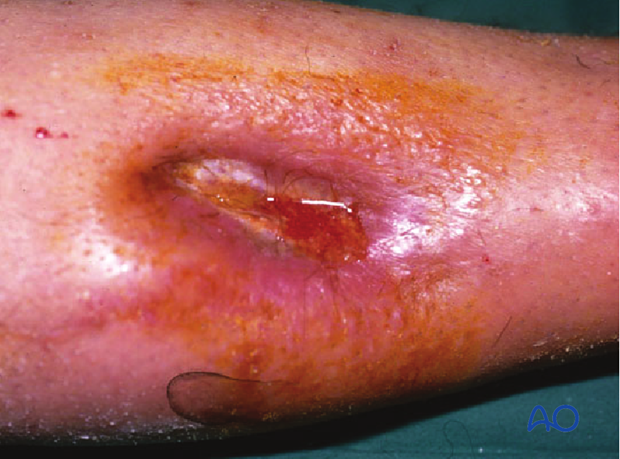Chronic infection
1. Chronic infection
Principles and surgical treatment
An infection that has been present in a fracture wound for more than several weeks is a serious and challenging problem. Typically, such wounds have defied previous treatment attempts, or have been neglected.
If internal fixation devices are present, they almost certainly sequester microorganisms within a layer of adherent slime (biofilms). Such chronically infected fracture sites also harbor dead bone and soft tissue. The necrotic tissue may be localized, or diffuse. Without its total surgical removal, there is no prospect of controlling the infection. Fracture healing will be seriously compromised until the infection is controlled and all remaining tissue is demonstrably viable.
Treatment requires radical débridement of all dead or infected tissue, sometimes necessitating several operations. Fracture restabilization, usually with external fixation, is necessary.
Extensive bone removal may result in a segmental defect, or loss of an involved joint. So much tissue may have to be removed that reconstruction yields a less successful outcome than would an amputation. Failure to control infection may also lead to loss of the limb.














